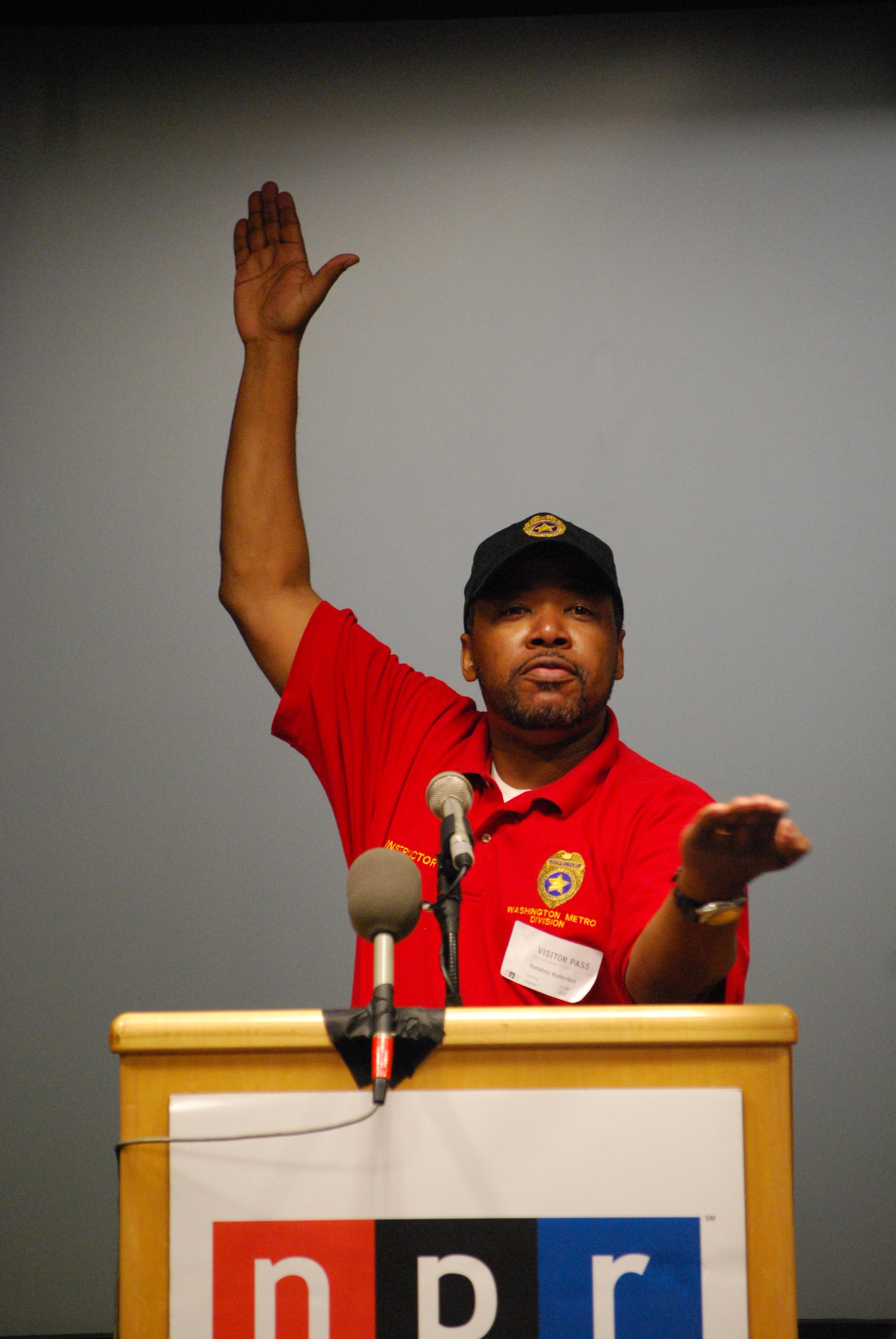
By Josh Sanders
UJW staff
WASHINGTON – In the movies, police officers often engage in violent shootouts with bad guys – no matter where they are.
But in real life, officers undergo rigorous training to minimize accidental deaths with firearms and to make sure they hit exactly what they’re targeting.
Cpl. Humphrey Rutherford, a police officer with the U.S. Postal Inspection Service, stressed the importance of weapons safety during a recent press conference with student journalists.
He said that’s not the perception you get from Hollywood, where weapons safety is rarely shown. On television, too often you see cops with their index finger ready to pull the trigger.
“This is the correct way,” Rutherford explained while resting his index finger to the lower side of the shaft of a blue model gun.
Rutherford, 52, belongs to a branch of officers who investigate mail fraud as well as keep the public safe in and near postal facilities.
“Safety is our biggest priority,” he said, referring to handling weapons and weapons shipped through the mail.
Rutherford’s often-dangerous job requires him to carry a .40-caliber pistol.
Rutherford and his fellow officers have to learn all the parts of a gun and practice how to take it apart and reassemble it — even going to such lengths as putting the gun back together blindfolded.
Those skills come in handy when criminals try to ship illegal guns through the mail. Officers, because of their intense training, often are able to detect gun parts when packages pass through the postal x-ray machine.
Rutherford went on to say there are “strict instructions on the shooting range,” showing how cautious officers must be when handling firearms.
The rules: Treat each weapon as if it’s loaded; keep your finger off the trigger; know the target, backdrop, and beyond; and never point it in a direction where an unintentional discharge can occur.
Weapons training is not the only thing officers learn.
Rutherford said all officers learn about the body’s nervous system in defensive tactics training so that they can use their metal batons to take down suspects without killing them.


